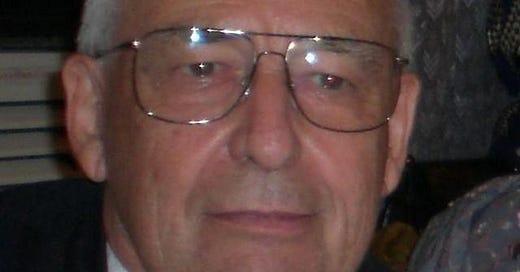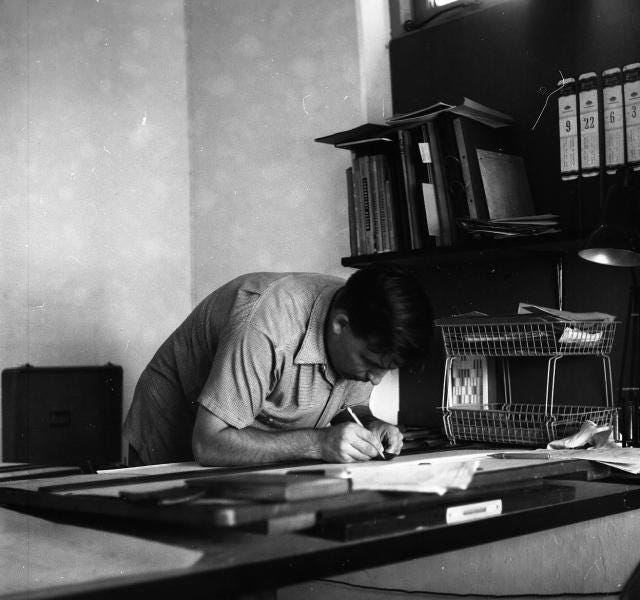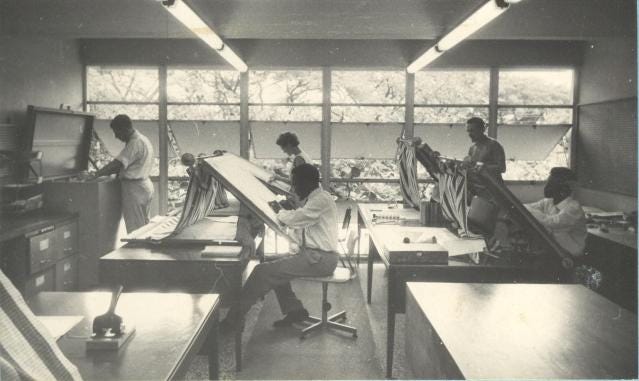John Godwin, architect whose practice designed more than 1,000 buildings in Nigeria – obituary
Telegraph Obituaries
John Godwin, who has died aged 94, was an architect who was relatively unknown in his native Britain, as his major work was undertaken in Nigeria from 1954 over a period of nearly 60 years; working in with his wife, Gillian (Jill) Hopwood, Godwin became a significant contributor to educational and industrial buildings in different regions of the country, before and after independence.
Equally important were the training opportunities they offered to Nigerian architects in their Lagos office, the practice’s innovation in solar shading and the management of hot climates, both wet and dry.
John Godwin was born at Chalfont St Giles in Buckinghamshire on June 17 1928; his father William was an architect whose career was mainly at the Ministry of Works. The family of his mother, Laura Godwin, née Watkins, had Belgian connections, and John was sent to attend school there in the autumn of 1939, but escaped on the last boat.
He attended Wimborne Grammar School and Wrekin College, then Kingston School of Art, gaining a Leverhulme Scholarship to enter the Architectural Association School (AA) in London aged 17 in 1945, doing National Service afterwards in the Royal Engineers. He excelled as a student, and married Gillian, who was in the same year group, in 1951.
Among their AA tutors was Leo de Syllas of Architects’ Co-Partnership (ACP), who was opening a branch office in Lagos and recruited the couple to join it; John flew out and Jill followed later by sea.
ACP sent their work back to London for detailed development, which the Godwins considered wrong in principle and after 18 months, they decided to set up their own practice in Lagos, building their own office at 27 Boyle Street with a flat on the upper floors as a signal of their commitment to remain. By the end, they had designed over 1,000 buildings.
John joined the Island Club in Lagos, which had no colour bar, and soon established many connections, continuing beyond independence in 1960 and weathering subsequent political upheavals.
ADVERTISEMENT
In addition to Nigerian architects as well as Europeans and citizens of Eastern European countries were trained there and the practice was handed over to successors, continuing as Godwin Hopwood Kuye, under Abiola Fayemi. John also played a major role in teaching architectural students at the universities of Zaria and Lagos, as well as lecturing widely.

Design that adapted the buildings to the climate with passive systems became a significant theme in their work, with contrasts between the hot wet conditions of the south, and the hot dry conditions in the north of Nigeria.
In company with other practices of English origin, including ACP, Fry and Drew and James Cubitt, also with the collaboration of members of Ove Arup and Partners, and George Atkinson of the Building Research Station, they experimented with adjustable solar shading devices and creating through-draughts, creating a repertory of forms, sometimes assisted by air-conditioning.
Much of their work concerned production plants and offices for industrial companies coming into this new market, including Metal Box, Shell and Guinness.
Their office building, Allen & Hanbury House, 1959, fronting Tinubu Square, was ground breaking in its use of solar shading, light touch marble fittings and its prominent location in the centre of what was then a rapidly developing Lagos. They also carried out many school buildings, mostly funded by the World Bank on minimal budgets, and later university buildings, including the University of Lagos Science block.
The practice began to wind down in 1989, although the founders continued to play a consultant role and also worked with their son, Tony. Continued to focus on teaching and writing, including the book Sandbank City, Lagos at 150, 2012, which gives ample evidence of their commitment to the conservation of older buildings. Their daughter Carey trained as an interior designer and had some involvement with the practice.
He had taught for a time during the 1950s at the University of Zaria, where he had encountered the formidable and unparalleled Zaria Art Society. This later led to collaborations with Yusuf Grillo at the New Nigerian Newspapers building in Kaduna, a commission to design a house for Ben Enwonwu (unrealised) and his book on Demas Nwoko, written with Hopwood, and published in 2010.
While this substantial achievement was well known in professional circles in the region, it made little impact on the British profession or public, partly as little of the work was published in journals. Godwin and Hopwood settled permanently in England in 2017, bringing their practice archive with them, which is in the process of transfer to the Canadian Centre of Architecture in Montreal. Both have been recorded for the Architects’ Lives programme of the National Life Story Collection, and a book on their practice is due to be published by Birkhauser in late 2023.
John Godwin is survived by Gillian, Tony and Carey.
John Godwin, born June 17 1928, died February 12 2023







![Necas [North East College of Arts and Science], University of Maiduguri, Nigeria Necas [North East College of Arts and Science], University of Maiduguri, Nigeria](https://substackcdn.com/image/fetch/$s_!ZjNC!,w_1456,c_limit,f_auto,q_auto:good,fl_progressive:steep/https%3A%2F%2Fsubstack-post-media.s3.amazonaws.com%2Fpublic%2Fimages%2F776d75a8-97db-47fe-9b74-54b5419b7b86_639x450.jpeg)